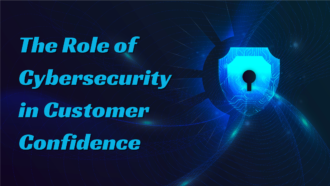4 Best Ways To Protect Your E-Commerce From Fraud In 2023
Welcome to the realm where digital dreams come true. Where the click of a button unlocks a world of products and possibilities.
Enter the vast landscape of e-commerce.
This is where entrepreneurs and shoppers converge. However, as the digital marketplace thrives, so do the cunning schemes of fraudsters. All seeking to exploit any weakness.
In the e-commerce industry, trust is the currency that fuels success. Every transaction and every interaction hinges on the delicate balance between convenience and security. As business owners, it is your duty to protect your assets against the looming threats of fraud and deception.
According to a report by Cybersource, more than one-third of merchants experience first-party misuse or “friendly fraud.” In this article, we will explore the four best ways to safeguard your e-commerce empire from such fraud.
From the elegant artistry of fraud detection solutions to the strategic maneuvers that inspire customer confidence. We shall unravel the secrets to protecting your empire.
Understand the diverse facets of e-commerce fraud
Digital fraud
Do you understand the complexities of digital fraud?
From the deceptively innocent phishing emails to the cunning sophistication of identity theft. To effectively combat fraud, one must first understand its various guises.
However, knowledge alone is not enough to protect your e-commerce empire. Let us now unveil the powerful ecommerce fraud detection techniques that can thwart the nefarious ambitions of these cybercriminals.
Businesses should implement robust fraud detection systems in tandem with stringent authentication protocols. Advanced artificial intelligence algorithms can step in and analyze patterns and anomalies. They can provide real-time alerts to identify suspicious activities.
Additionally, you can add various layers of security such as:
- two-factor authentication
- biometric verification
- IP address tracking
This ensures that only genuine customers access your platform.
Digital identity security
Digital identity theft is also on the rise. Here are some steps you can take to prevent identity theft:
- Educate your customers about phishing emails
- provide secure payment gateways that encrypt sensitive data.
- Implement secure socket layer (SSL) certificates to establish encrypted connections
- safeguarding customer information from inception
Tokenization
To combat unauthorized transactions adopt secure payment processing methods such as tokenization or encryption. Regularly monitor transactions for unusual patterns or high-risk indicators. This enables swift action against fraudulent activities.
Additionally, apply the power of machine learning to continuously upgrade your fraud prevention strategies. This in turn will allow you to adapt to emerging threats in real-time.
By incorporating these solutions, you can support your e-commerce business against the diverse facets of fraud. Remember that proactive measures are the keys to safeguarding your empire from the shadows of e-commerce fraud.
Harness the power of AI
AI on guard
Like an orchestra of digital sentinels, advanced fraud detection solutions stand guard. They employ the prowess of artificial intelligence (AI) to shield your online assets.
In the modern age of e-commerce, fraudsters have become masterful chameleons. They adapt their tactics to exploit vulnerabilities. To counter their threats, innovative AI-powered solutions serve as the beacon of hope. Machine learning algorithms are finely tuned to discern intricate patterns amidst a sea of data. The AI becomes the vigilant eye that scrutinizes every single transaction.
AI analytics
These AI guardians analyze vast datasets in real-time. They do this by exploiting the power of predictive analytics and anomaly detection.
This advanced technology:
- identify deviations and suspicious activities that evade human detection
- unveil hidden links
- uncover emerging fraud patterns
- generate actionable insights to strengthen your fraud prevention strategies
This sophisticated technique can establish an intricate profile. This is done by capturing and analyzing:
- keystrokes
- mouse movements
- device attributes
All of these factors combined in perfect harmony enable continuous authentication for your transactions.
Suspicious deviations will trigger immediate alerts, allowing you to halt criminal threats and attempts. They also ensure a frictionless experience for genuine customers.
AI solutions
Adopt a unique symphony of AI-driven fraud prevention solutions. Where network analysis illuminates connections between seemingly unrelated entities.
By harnessing the power of graph databases and network modeling, these solutions can:
- uncover intricate fraud networks
- exposing hidden collaborators
- dismantling their operations
However, the fluid nature of fraud demands constant innovation. Stay at the forefront of fraud prevention by exploring cutting-edge technologies like blockchain. This offers immutable transaction records and enhances transparency.
Coupled with machine learning, blockchain-based solutions provide a formidable defense against fraud. This allows businesses to operate with unshakable trust.
Implementing these advanced fraud detection solutions allows you to outmaneuver cyber criminals. It also cultivates an environment of trust and security for your customers.
Payment gateways and encryption protocols
The rising popularity of e-commerce
According to a study conducted by Signifyd, the global opportunity for digital commerce will reach $6.17 trillion by next year. Due to the delicate nature of this e-commerce, secure payment gateways are required to protect these transactions. These fortified portals ensure that sensitive customer data is safe through an impenetrable conduit.
Your customers’ financial information can remain shielded from the prying eyes of fraudsters by:
- partnering with trusted payment service providers
- implementing industry-standard security measures
- ensuring Payment Card Industry Data Security Standard (PCI DSS) compliance
Encryption assistance
Encryption is a helpful weapon against fraud as well.
This is where information is transformed into an impregnable cipher. It is advisable to employ robust encryption protocols such as:
- Transport Layer Security (TLS)
- Secure Sockets Layer (SSL)
- Internet Protocol Security (IPsec)
- Pretty Good Privacy (PGP)
- Secure Shell (SSH)
This will ensure your e-commerce transactions are enveloped in an ethereal cloak. Impeding any attempts to intercept or manipulate this sensitive data.
Digital alchemy for protection
Utilize the potential of tokenization. It’s a type of digital alchemy that replaces sensitive customer information with non-sensitive tokens. Thus rendering them meaningless to any potential attackers.
By employing this technology, your e-commerce empire does not have to store extensive customer data. This will reduce the allure for fraudsters to attack. As well as mitigating the impact of data breaches.
This minimizes potential losses and shields your reputation.
Data analytics for enhanced fraud prevention
Utilizing the capabilities of data analytics, you can unlock a treasure trove of insights and strategies. These can strengthen your defenses and outsmart fraudsters.
The power of data
Data analytics enables us to detect hidden patterns and anomalies within vast volumes of transactional data. This is accomplished by applying advanced algorithms and machine learning techniques.
It can identify deviations from normal behavior. Flagging potentially fraudulent activities for further investigation.
With the aid of data analytics, e-commerce platforms can implement real-time fraud monitoring systems. Continuously analyzing incoming data streams, these systems can instantly identify suspicious patterns or behaviors. This triggers immediate alerts and enables timely intervention.
Risk scoring adventures
Data analytics empowers us to develop sophisticated risk-scoring models. This is based on user behavior and transactional patterns.
Risk scoring performs analysis on:
- historical data
- user profiles
- contextual information
We can assign risk scores that reflect the likelihood of fraudulent activity. In turn, implementing targeted fraud prevention strategies.
Digital forecasts
Exploiting historical data and predictive analytics, we can forecast and anticipate potential fraud scenarios. It is also possible to Identify common fraud patterns and emerging trends.
Then we can proactively implement preventive measures. Allowing us to stay ahead of these cybercriminals and minimize risks.
Exposing fraud networks
Data analytics allows us to explore the connections and relationships between entities within the e-commerce ecosystem. If you conduct network analysis, you can identify hidden links and associations among fraudulent actors.
This will uncover sophisticated fraud networks and facilitate targeted interventions.
Data analytics, coupled with adaptive machine learning algorithms, empowers us to continuously enhance fraud prevention capabilities.
These algorithms learn from past experiences. They stay ahead of morphing fraud tactics as a result. The algorithms adapt and refine their detection models, improving accuracy and staying resilient against all kinds of threats.
When fraud occurs, data analytics plays a pivotal role in forensic investigations. The types of data analyzed include transactional data, user interactions, and system logs. With this information, we can:
- reconstruct events
- identify points of compromise
- gather evidence to support legal actions against fraudsters.
Securing your e-commerce empire
Consider using these four solutions for your eCommerce store. Harness the power of cutting-edge technologies. At the same time, you can arm your team with knowledge and establish unwavering trust with your customers.
In the evolving terrain of e-commerce, criminals are the adversaries we must outsmart. But now you possess the tools and strategies to navigate this digital battlefield with confidence and emerge victorious.
Think of your business as a digital superhero, armed with state-of-the-art technology and a brilliant team. With every transaction and every interaction, you showcase your commitment to customer safety and the resilience of your brand.
Make sure to stay agile and adapt to advancing threats. Encourage a culture of security and awareness. Now you can pave the way for a future where e-commerce is synonymous with trust, convenience, and unparalleled experiences.




















